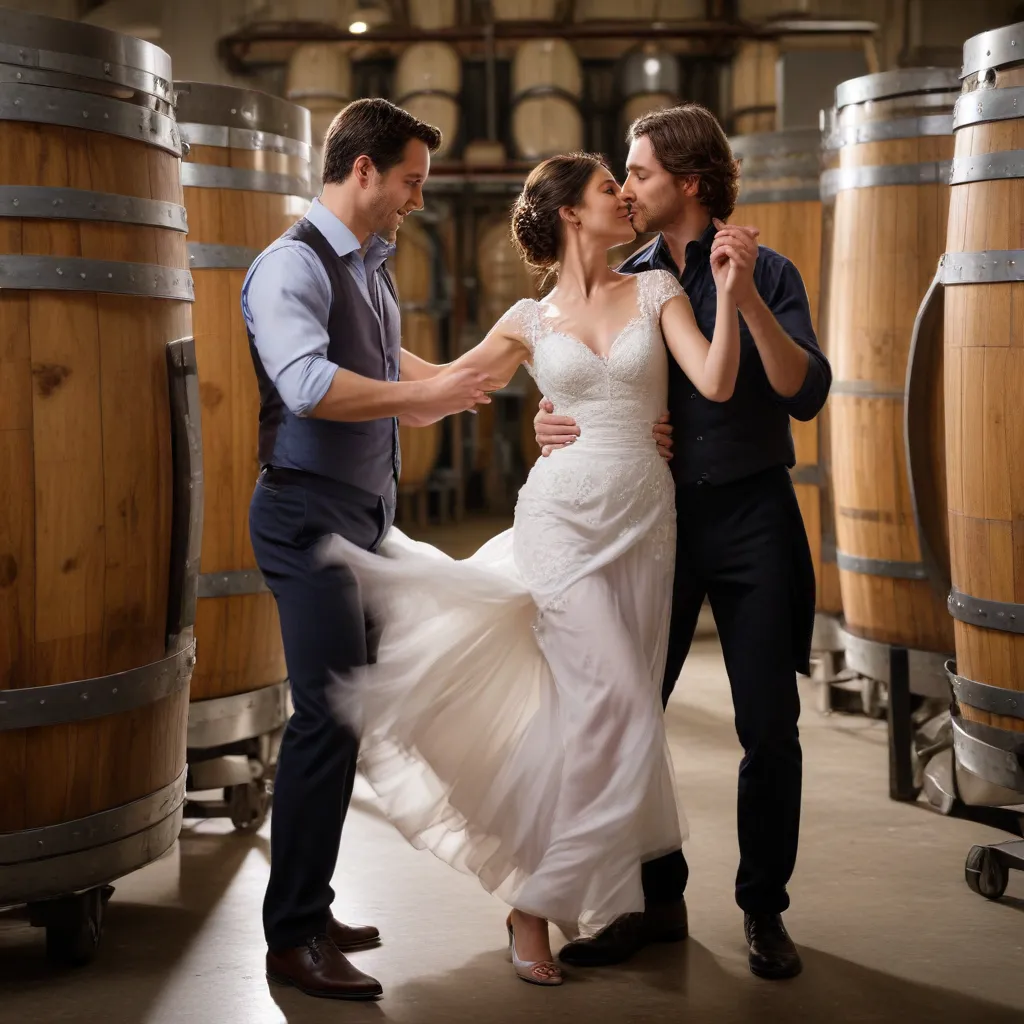
In the grand symphony of winemaking, the fermentation process is the rhythmic heartbeat that infuses each bottle with its distinctive character. It’s a captivating waltz, where yeast, sugars, and temperatures dance in perfect harmony, transforming humble grape juice into a liquid work of art.
As a hospitality and wine expert for the Wine Garden Inn, I’m thrilled to take you behind the scenes and unravel the intricate steps of this winemaker’s waltz. From the careful selection of grape varietals to the final bottling, each phase of the fermentation process requires a delicate choreography, a true symphony of skill and natural forces.
Viticulture and Grape Cultivation
At the heart of winemaking lies the vineyard, where the journey begins with the careful cultivation of grapes. The choice of grape varietals and the unique terroir they grow in are the foundation upon which the fermentation process is built.
Cabernet Sauvignon, with its thick skins and robust tannins, thrives in the warm, sun-drenched regions, while the delicate Pinot Noir finds its true expression in the cooler, fog-kissed vineyards. Meticulous canopy management and strategic pruning ensure that each grape cluster is nurtured, receiving the perfect balance of sunlight and airflow to develop its full potential.
When the grapes reach their optimal ripeness, the harvest dance begins. Experienced hands carefully select the fruit, ensuring only the healthiest, most vibrant grapes make their way to the winery. This attention to detail lays the groundwork for the captivating fermentation to come.
The Fermentation Process
As the grapes arrive at the winery, the true alchemy of winemaking commences. The fermentation process is a delicate choreography, where yeast and sugars engage in a dynamic pas de deux, transforming the grape juice into the elixir we know and love.
The winemaker’s first step is the selection of the perfect yeast strain, the invisible partners that will drive the fermentation. Each yeast strain brings its own personality to the wine, imparting distinct aromatic profiles and subtle flavors. It’s a careful balance, like choosing the right dance partners for the waltz.
Next, the winemaker orchestrates the temperature and timing, ensuring the fermentation unfolds at the ideal pace. Temperature control is crucial, as it influences the yeast’s metabolism and the development of the wine’s flavors. Too warm, and the yeast may race through the sugars, leaving the wine unbalanced. Too cool, and the fermentation may stall, depriving the wine of its full potential.
Throughout this process, the winemaker vigilantly monitors the sugar levels, carefully tracking the dance between the yeast and the grape sugars. As the yeast consumes the sugars, transforming them into alcohol, the winemaker must be attuned to the perfect moment to halt the fermentation, preserving the desired balance of sweetness and dryness.
Elevage and Maturation
The fermentation waltz may have reached its crescendo, but the wine’s journey is far from over. The next phase, known as elevage, is where the wine undergoes a graceful maturation, further refining its character.
For many wines, this involves a delicate pas de deux with oak barrels. The winemaker selects the perfect cooperage, whether it’s the robust, toasted flavors of French oak or the subtle spice of American oak, to complement the wine’s inherent qualities. The dance continues as the wine interacts with the wood, extracting tannins, vanillins, and subtle oakiness that add layers of complexity.
But the waltz doesn’t stop there. Lees stirring and batonnage, the gentle agitation of the wine’s spent yeast cells, introduce a lush, creamy mouthfeel, while fining and filtration refine the wine’s clarity and stability.
Sensory Evaluation
As the final steps of the fermentation process draw to a close, it’s time to savor the fruits of the winemaker’s labor. The waltz has reached its finale, and it’s time to experience the wine in all its glory.
The aroma and bouquet of the wine are the first to captivate the senses, painting a vivid picture of the grape’s journey. Swirl the glass, and allow the wine to reveal its secrets – from the delicate floral notes of a Riesling to the rich, dark berry aromas of a Cabernet Sauvignon.
On the palate, the wine’s flavor profile unfolds, a symphony of tastes and textures. The winemaker’s choreography shines through, as the wine’s acidity, tannins, and alcohol levels work in harmony to create a balanced and captivating experience.
The final step in this winemaker’s waltz is the pairing with food, where the wine and culinary delights engage in a culinary pas de deux. The Wine Garden Inn takes great pride in curating gourmet breakfasts and seasonal menus that highlight the synergy between our estate-grown produce and the wines we pour. It’s a dance of flavors, where each element complements and enhances the other, creating a truly memorable dining experience.
Conclusion
The fermentation process is a symphony of natural forces, a waltz of yeast, sugars, and temperatures that transforms the humble grape into a liquid work of art. From the careful cultivation of the vineyard to the final sip, each step in this winemaker’s choreography is a testament to the dedication, skill, and passion that goes into crafting the perfect bottle of wine.
As you sip and savor the wines of the Wine Garden Inn, I invite you to pause and appreciate the intricate dance that unfolds in your glass. It’s a journey of flavors, aromas, and textures, a true celebration of the art of winemaking. So raise a glass, and join us in this captivating Winemaker’s Waltz.
